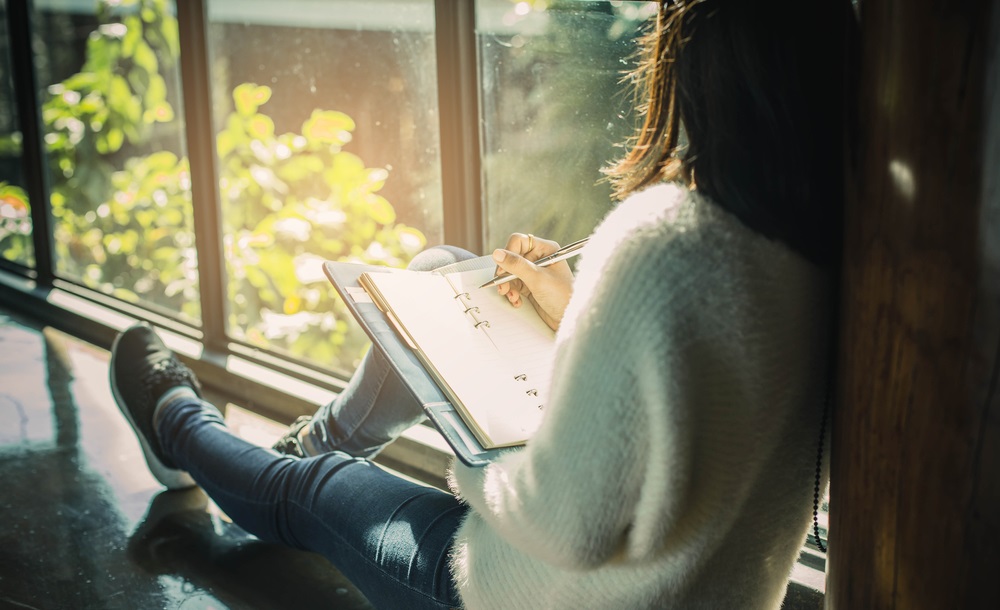Writing daily journal entries can feel daunting without a way to keep your creative juices flowing. Little wonder many quit the practice sooner or later; the concept sounds great in theory but is difficult to keep up with in practice.
In this guide, we explore the art of writing journals and share tips to help you master the practice. This way, you can consistently leverage your innermost thoughts, emotions, and ideas for personal growth.
Why Writing Journals for Self-Expression Matters
Being able to express yourself without worrying about someone harshly criticizing you or offering a quick fix for your perceived problem is a gift. Unfortunately, the world is constantly moving at a pace where people hardly find a safe sanctuary to bare their thoughts and emotions without judgment.
The good news is that your journal can be that safe place where you can simply be yourself, uncensored and unfiltered. As you consistently express yourself in this judgment-free space, it allows you to reflect on your inner world, gain insight, and grow as you embark on a journey of self-discovery.
Through journal writing, you can get your feelings out and better understand your problems, allowing you to seek long-lasting solutions.
Creative Journaling Techniques for Self-Expression

When it comes to creative journaling, there are various techniques that will infuse your journal with personality, emotions, and vibrant expression. Remember, creative journaling has no hard and fast rules — only endless possibilities.
Feel free to mix and match these techniques, experiment with different styles, and make your journal reflect your unique self.
1. Stream of Consciousness Writing
Think of stream-of-consciousness writing as downloading thoughts directly from your mind to the paper. It’s all about letting your mind flow freely.
Grab your pen, start with a word or phrase, and let your thoughts spill onto the page without filtering or judgment. This journaling technique can unearth hidden feelings, ideas, and insights you didn’t even know you had.
It is important not to edit, censor, or limit yourself when using this journaling technique ― the idea is to freely express yourself on paper without holding back your thoughts.
2. Letter Writing
Imagine writing a heartfelt letter to yourself, your future or past self, or someone you need to forgive or thank. This technique can be incredibly therapeutic.
Pour your emotions onto the page, addressing them to yourself or the intended recipient. Think of it like having a conversation with your journal; in addition to providing deep insights, it can lead to emotional release.
3. Mind Mapping
Sometimes, your thoughts are like a tangled web that needs unraveling. That’s where the mind mapping technique can help you make sense of the chaos.
Begin with a central idea or theme in the center of your page and branch out with related thoughts and associations. It’s a visual way to organize your ideas and explore connections you might not have considered otherwise.
4. Visual Journaling
For the artistically inclined, visual journaling is a dream come true. Combine words with images, sketches, collages, or other visual elements that resonate with you. It’s a fantastic way to capture your feelings, experiences, and memories in a unique and personal way.
Don’t worry about perfection; visual journaling is not the same as creating a gallery-worthy masterpiece. Instead, it is about letting your creativity flow using a more relaxed and open approach to artistic expression.
5. Poetry and Creative Writing
If you have a way with words, why not try your hand at poetry or creative writing in your journal? Express your thoughts, feelings, and experiences through poetic verses or short stories.
Allow yourself to explore your imagination and let the words flow freely onto paper or a digital device. You might be surprised by the beauty you can create.
6. Journal Prompts and Inspiration
The idea of consistently making daily journal entries can be quite intimidating when staring at a blank page, especially if you’re new to the practice. That’s where journal prompts and inspiration come in handy.
Use writing prompts or quotes as a starting point to spark your creativity. They can jumpstart your journaling session and lead you down unexpected paths of self-discovery.
5 Tips for Making the Most of Writing Journals

1. Choose a Time
The first step to making journaling a habit is to find a time of day that suits you best. Some people prefer to journal in the morning to start the day, while others unwind in the evening.
If you’re new to personal writing, feel free to experiment with daily journal entries at different times of the day to find what resonates with you.
2. Consider Incorporate Nature Sounds Into Your Journaling Routine
The art of writing journals is exciting on its own, but adding a dimension of sensory immersion can take things to a whole new level. Taking your journaling outdoors, where nature sounds serenade your thoughts, can create a grounding experience.
If you prefer a more controlled auditory experience, consider using a steady hum of white noise or ASMR to create tranquility or playing soft instrumental music to enhance your journaling experience.
You may even begin or end your journaling practice with a short guided meditation to encourage relaxation and mindfulness.
3. Choose Your Journaling Medium
Whether you keep a paper journal or use a digital medium comes down to personal preference. Psychologists have shown that the tactile or sensory experience of putting pen to paper can enhance the connection to your thoughts, allowing you to dig deep and explore your emotions during writing.
However, some people easily get into the zone and flow better when typing or using a digital device.
The key is experimenting with various mediums and becoming aware of what works best for you as you journal consistently. By the way, you can keep multiple journals for different purposes, so it’s okay to use both paper and digital journals, provided they feel right for you.
4. Focus on Self-Expression, Not Recording Everything
Creative journaling is very different from diary entries. You will likely tire yourself out very quickly and abandon the practice if you try to keep a minute-by-minute account of what goes on in your life.
With journaling, you only write the thoughts, feelings, and ideas you want to explore – only journal about what’s necessary for your personal growth.
By the way, read this guide to learn the difference between a journal and a diary and which is right for you.
5. Use Any Journaling Format You Want and Write About What You Want
Journaling comes in various formats, including:
- Gratitude journaling
- Bullet journaling
- Art journaling
- Dream journaling
- Scrapbook journaling
The art of writing journals is all about expressing yourself how you want and on whatever topic you wish. In other words, it’s entirely up to you to choose whatever format best suits your purpose.
That said, avoiding using your journal to collect negative thoughts is important. A more helpful approach would be to journal to express and explore your deep thoughts, emotions, and ideas for self-discovery.


